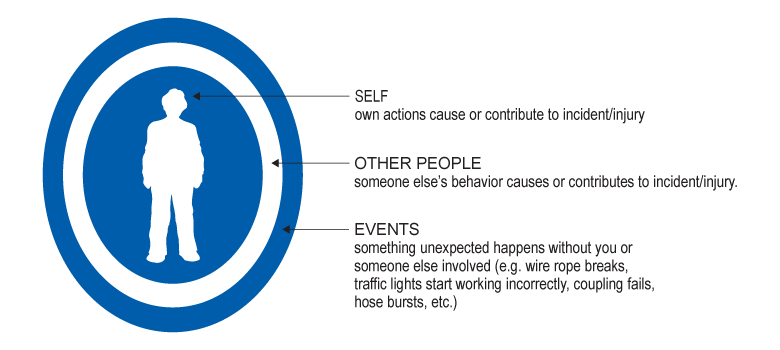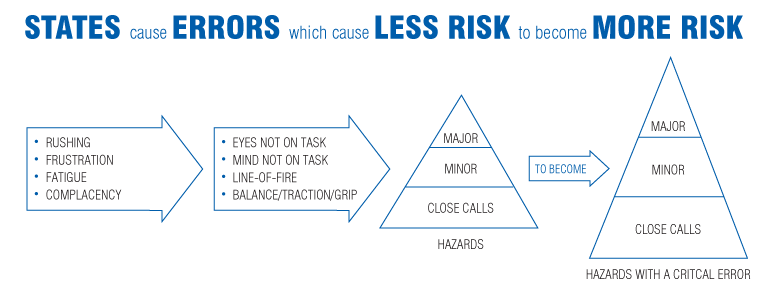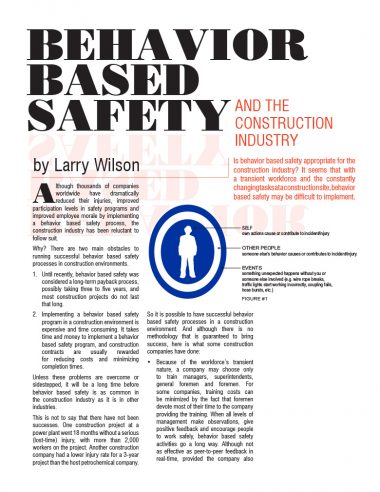This article by Larry Wilson originally appeared in the
September 2001 issue of Construction & Engineering Safety Magazine.
Is behavior-based safety appropriate for the construction industry? It seems that with a transient workforce and the constantly changing tasks at a construction site, behavior-based safety may be difficult to implement.
Although thousands of companies worldwide have dramatically reduced their injuries, improved participation levels in safety programs and improved employee morale by implementing a behavior-based safety process, the construction industry has been reluctant to follow suit.
Why? There are two main obstacles to running successful behavior-based safety processes in construction environments.
- Until recently, behavior-based safety was considered a long-term payback process, possibly taking three to five years, and most construction projects do not last that long.
- Implementing a behavior-based safety program in a construction environment is expensive and time consuming. It takes time and money to implement a behavior-based safety program, and construction contracts are usually rewarded for reducing costs and minimizing completion times.
Unless these problems are overcome or sidestepped, it will be a long time before behavior-based safety is as common in the construction industry as it is in other industries.
This is not to say that there have not been successes. One construction project at a power plant went 18 months without a serious (lost-time) injury, with more than 2,000 workers on the project. Another construction company had a lower injury rate for a 3-year project than the host petrochemical company.

Figure #1
So it is possible to have successful behavior-based safety processes in a construction environment. And although there is no methodology that is guaranteed to bring success, here is what some construction companies have done:
- Because of the workforce’s transient nature, a company may choose only to train managers, superintendents, general foremen and foremen. For some companies, training costs can be minimized by the fact that foremen devote most of their time to the company providing the training. When all levels of management make observations, give positive feedback and encourage people to work safely, behavior-based safety activities go a long way. Although not as effective as peer-to-peer feedback in real-time, provided the company also puts on training sessions that explain the objectives of behavior-based safety to all employees, it can, as mentioned before, be very effective at reducing injuries. Once the workforce understands that behavior-based safety is not designed to punish employees, it becomes easier to gain buy-in for the system. In addition, training sessions give management an opportunity to encourage employees to think more about their own safety and the hazards present.
- Some companies have even taken these training sessions further by including advanced safety awareness concepts and techniques. Advanced awareness training looks at all of the necessary ingredients for an accidental injury: the hazard, something unexpected happening, and the hazard contacting the worker or the worker contacting the hazard.
Although hazards are usually the focus of safety programs, the “source of the unexpected” should be given more attention (see Fig. #1). Either a worker does something unexpectedly, their coworker does something unexpectedly, or the equipment activates unexpectedly.

Figure #2
Surprisingly, more than 90 percent of all injuries are caused by the individual doing something unexpectedly, rather than as a result of a coworker or the equipment doing something unexpectedly. These unexpected occurrences by the individual are mistakes or errors (which are always unexpected).
Mistakes that cause over 90 percent of injuries are the following:
- Eyes not on task
- Mind not on task
- Moving into or being in the line-of-fire
- Losing balance, traction or grip
There are also human factors that contribute to errors. The four states that cause more than 90 percent of the four critical errors above are:
- Rushing
- Frustration
- Fatigue
- Complacency
While mistakes will happen, it is possible to teach people to recognize when they are in one of these four states before they make a critical error.
There are four techniques to reduce critical errors:
- Recognize the state or hazard to avoid a critical error.
- Analyze close calls and small errors to prevent big ones.
- Look for the patterns that increase the risk of injury with other people
- Implement good habits that reduce the risk of injury.
Training employees to handle critical errors and then following up with on-the-job observations drives injuries down dramatically and swiftly. Some companies report injury reductions of 80 percent within four months, although typical reductions are 60 to 90 percent within a six- to twelve-month period.
Is that quick enough for the construction industry? In some cases yes and in others no, but at least it gives the construction industry a model to improve safety through behavior-based safety programs.
What about cost? Even if this process does work fast enough, it is still expensive and time consuming ($50 per employee, 5 x 1.5 hours per training session). However, injuries and incident investigations are also expensive. If injuries are reduced, the money saved will more than pay for the training, wages and fees. As one general contractor said, “I would rather pay for the training than pay for the injuries, damage and delays…”
Larry Wilson has been a behavior-based safety consultant for over 25 years. He has worked with over 2,500 companies in Canada, the United States, Mexico, South America, the Pacific Rim and Europe. He is also the author of SafeStart, an advanced safety awareness program currently being used by over 2,000,000 people in 50 countries worldwide.

Get the PDF version
You can download a printable PDF of the article using the button below.

